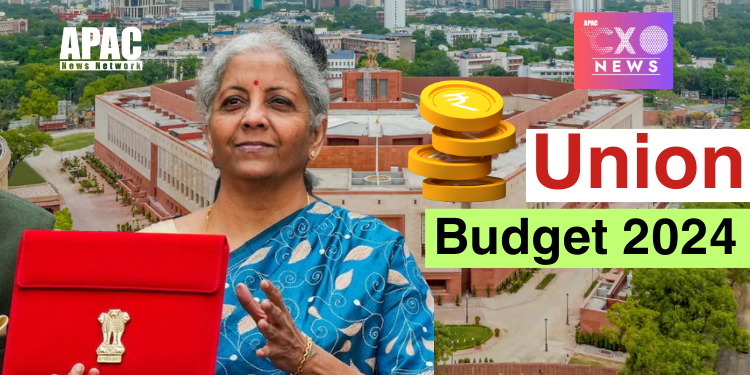What makes Delhi-NCR the New Advertising Capital of India?
The debate between Mumbai and Delhi has been a long standing one. The cities draw comparisons on a host of levels ranging from economics, culture, infrastructure, safety and most of all, affluence.
If we look at this debate from a pure play numbers game, Delhi scores better on most counts, barring some critical metrics such as crime and safety for women.
As per a study conducted by Oxford Economics, Delhi overtook Mumbai in 2015, with a GDP of USD 370 billion as compared to Mumbai’s USD 368 billion. the study predicts that Delhi will have a GDP of USD 1,040 billion and Mumbai USD 930 billion by 2030.
Given this shift in economics, Delhi-NCR is fast emerging as the new hub of the advertising world. One of the reasons for this shift is that big ad spenders like Maruti, Pepsi, Coke, Nestle and more based in Delhi-NCR. Consequently, the ad industry has grown too.
In addition, the proximity to the national capital has also made telecom companies and mobile handset manufacturers set up or move their headquarters to the NCR. “Once large FMCG clients came up in Delhi-NCR, it meant that there would be a need and demand for advertising there and therefore, ad agencies started going there,” said Ashish Bhasin, Chairman and CEO, South Asia Dentsu Aegis Network.
The race to become the new ad capital of the nation has particularly intensified in the last decade. With Delhi NCR becoming the base for many big brands, thanks to the political proximity that it offers, it has reached a point where it can overtake Mumbai. “In the early days, we saw the rise of big corporates such as ITC, Birla and other conglomerates when Kolkata was, in fact, the hub of marketing. That shifted to Mumbai as the city grew to be the financial capital of the nation. For about 10–15 years now, Delhi has been the marketing hub because many companies that spend significantly on advertising have set up base in Delhi-NCR,” said Manish Bhatt, Founder, Scarecrow Communications.
Rajiv Dingra, Founder and CEO, WATConsult, believes that the signs of this shift have been in the making for a while now. According to him, “Over last two-three years, Delhi has risen as one of the largest advertising spenders and this has been driven across categories. We see this trend growing, with many large Chinese handset players, along with Telecom and FMCG players from Delhi, growing their spends over the next two-three years.”
Sandeep Amar, CEO, Indian Express Digital, explains this change saying, “This shift happened a long time ago and with the exception of Unilever and BFSI, Delhi is a very strong market with Coca-Cola, Pepsi and other big brands such as Samsung and LG operating from here. I think NCR hubs such as Noida and Gurugram have given good office options to some of these corporates. On the agency side, GroupM still has a huge presence in Mumbai, but I believe that Delhi is already a bigger market in advertising.”
The move to Delhi-NCR began with the rise of Gurguram as the preferred business destination. Great infrastructure and favorable Information Technology also made Delhi-NCR a preferred destination for commercial space development. Manufacturing is the largest contributor to Delhi’s economy. Manufacturing alone contributed to an income of Rs 45,689 crore in 2016-17. The number of working factories in Delhi increased from 7,793 in 2007 to 8,954 in 2015.
According to Saurabh Mathur, Planning Director, VML India a lot of production of goods has moved out of Mumbai. “Most manufacturing operations have not set up base in Mumbai and most new age companies like e-commerce are now in Gurgaon,” said Mathur, listing out factors in favour of the NCR.
KartikIyer, Chief Executive Officer, Happy Mcgarrybowen feels that the move is driven by multiple factors. “The boom of Gurugram as a piece of modern real estate is the first factor. Better prices and modern amenities allow even massive corporations to start up fresh for the future. Add to that the boom of the new-age businesses and start-ups. There are loads more in Delhi/Gurugram over Mumbai. Many businesses have moved their marketing to cities like Chennai. All these together add up to quite a lot,” he said.
He said that the NCR’s advantage is that it is a fresh option. “There’s only so much space in Mumbai. Having been the commercial capital for the longest time, Mumbai has the hangover of doing business in its own inimitable style. You are expected to experience a certain ‘grind’ before you are handed out success. Mumbai is the bastion for old world businesses that have ruled in India. It is still their backyard. It’s not a very welcoming atmosphere for new age businesses that are challenging their very existence. That is the primary reason there aren’t many new age startups founded by young entrepreneurs from Mumbai,” he explained.
“Delhi dethroning Mumbai doesn’t really come as a surprise as Delhi, especially Gurugram, has witnessed a rapid corporate growth with 80% of fortune 500 companies present here now. Brands are booking advertising agencies based out of Delhi NCR. A decade ago, Mumbai generated three-fourths of the total advertising expenditure in the country, whereas ad spend in Delhi was only 75% of that in Mumbai. Presently, the gap is at its closest. Delhi is highly likely to exceed the expenditure by year-end,” stated Sahil Chopra, CEO and Founder, iCubesWire.
The rise in infrastructure due to availability of vast land spaces has definitely played a pivotal role in making Gurugram the millennium city it is today. The notion of Mumbai having bigger and better offices doesn’t stick anymore as headquarters of numerous ad agencies are now based in Delhi-NCR. Besides the rate of growth of Delhi NCR, the stagnant growth of Mumbai has also been a key reason for its downfall. However, because of the acting talent found in Mumbai, it still remains a preferred location for shooting ad films, movies, videos and more for brands and will continue to be so.
Tarun Rai, CEO, JWT South Asia, thinks that the emergence of Delhi NCR region on the ad radar gives us two advertising capitals. “New Delhi, actually NCR, has been growing into a big ad market for the past decade or so. Many of the country’s high-profile brands are now based there and therefore, the ad industry has grown too. Mumbai continues to be important. Many marquee companies and brands continue to be stationed there. Besides, thanks to Bollywood, a lot of the production facilities and talent also continues to be there,” he said.
While Delhi-NCR’s growth as a marketing hub has been fast and unexpected, Mumbai will continue to be a prominent centre for the marketing and advertising industry given its proximity to creative talent in Bollywood. “Mumbai will always have an edge because the Bollywood industry is based here. In addition, huge advertisers like Hindustan Lever, Procter&Gamble, L’Oreal, and Johnson &Johnson are still based in Mumbai,” said Bhasin. Also, Mumbai remains a key marketing and advertising hub as the head offices of several agencies are based in Mumbai, as are industry bodies, he added.
Sanjay Mehta, Jt CEO, Mirum India, on the other hand, believes that talent is being acquired at break neck speed in the NCR and that the industry is growing faster. “The perception is that the ad spends initiated in the NCR are as high has those initiated in Mumbai. Previously, Mumbai was the undisputed No. 1, but now the perception is changing. The one thing holding New Delhi back was talent in the advertising, creatives sectors. With the shift in the advertising industry spreading to Delhi, the talent pool has grown,” said Mehta.
The rise of Gurugram as a favoured city for setting up manufacturing plants has driven the marketing hub to Delhi-NCR from Mumbai. Sujata Dwibedy, EVP, Carat, explained that Delhi-NCR became the preferred region for companies because infrastructure there is much more supportive to companies. For starters, land is much cheaper. Dwibedy added that although Delhi’s growth has been fast-paced, it will not overtake Mumbai because that is where the largest advertisers are based. She also said that marketing activities may spread to cities beyond the four metros in the future and more markets will get into advertising.



